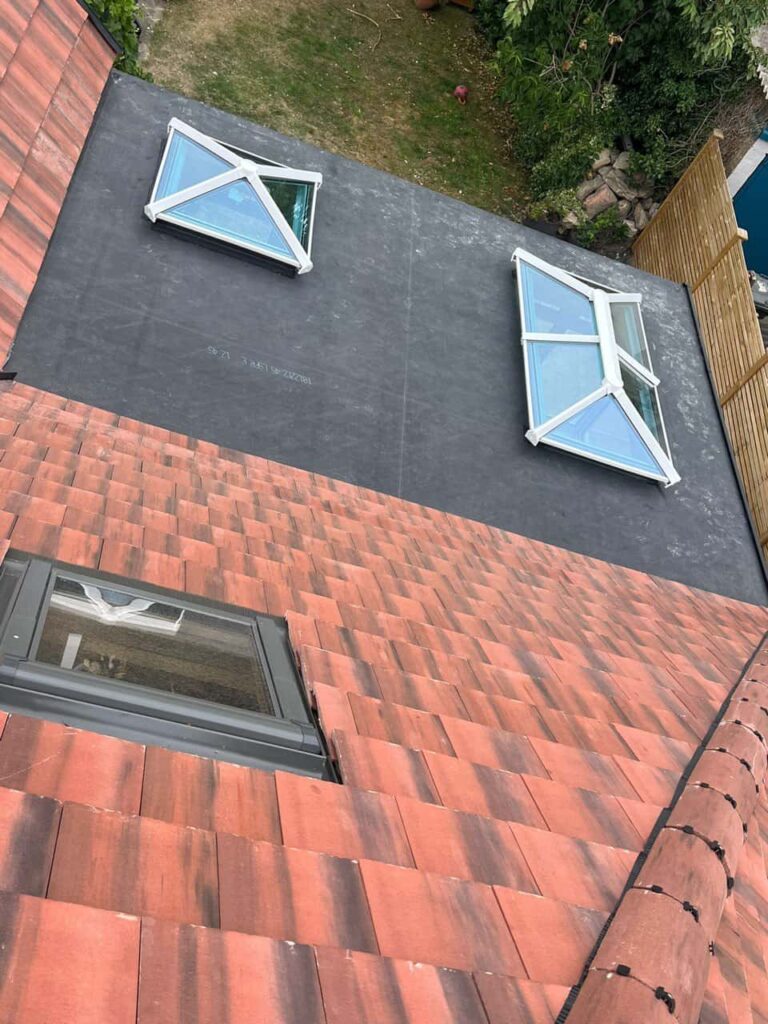Roof flashing is one of the most critical components of your roofing system, yet it is often overlooked by homeowners. Flashing is responsible for directing water away from vulnerable areas of your roof, such as chimneys, vents, skylights, and valleys, preventing water infiltration and subsequent damage. Over time, flashing can deteriorate due to weather exposure, age, or improper installation, leading to potential leaks and costly repairs. At LS Roofing Great Missenden, we believe that regular roof flashing inspections are vital for maintaining the integrity of your roof, especially in the unpredictable climate of Great Missenden, Buckinghamshire.
In this blog, we’ll explain why you should regularly check for roof flashing deterioration and how proper maintenance can save you time, money, and stress in the long run.
1. The Role of Flashing in Protecting Your Roof
Roof flashing is typically made from durable materials such as galvanised steel, aluminium, or copper, and is installed in areas where the roof surface meets vertical walls or other structures. Its primary function is to create a watertight seal that prevents moisture from seeping into these joints, where leaks are most likely to occur.
Without properly functioning flashing, water can penetrate the roof structure, leading to issues such as rot, mould growth, and even structural damage. Regular inspections help ensure that your flashing remains effective in its role as a barrier against water infiltration.
2. Signs of Flashing Deterioration
Flashing can deteriorate for a variety of reasons, from weather exposure to physical damage or corrosion. Here are some common signs that your roof flashing may need attention:
- Cracked or Bent Flashing: High winds, storms, or falling debris can cause flashing to crack or bend, compromising its ability to keep water out.
- Rust or Corrosion: Metal flashing, especially if not galvanised or treated, can rust over time, weakening its effectiveness and potentially allowing water to penetrate.
- Gaps or Separation: Over time, flashing can pull away from the roof surface or wall due to thermal expansion, improper installation, or wear. These gaps provide an entry point for water.
- Leaks or Water Stains: One of the most obvious signs of flashing failure is the presence of leaks inside your home. Water stains on ceilings or walls near chimneys, skylights, or dormers are often an indication that the flashing is no longer performing its job.
If you notice any of these signs, it’s important to have your roof inspected by a professional roofing company like LS Roofing Great Missenden as soon as possible to prevent further damage.
3. The Importance of Regular Inspections
Weather conditions in Great Missenden, Buckinghamshire, can vary significantly throughout the year, from heavy rains to strong winds and temperature fluctuations. These environmental factors can accelerate the wear and tear of your roof flashing, making regular inspections essential.
At LS Roofing Great Missenden, we recommend scheduling a professional roof inspection at least once a year, ideally before and after the winter season. During these inspections, we will check for any signs of deterioration, ensuring that your flashing is in good condition and functioning properly.
Regular inspections allow you to catch minor issues early, before they develop into major problems. Proactive maintenance can extend the life of your roof and save you from costly repairs down the line.
4. DIY vs. Professional Inspection
While some homeowners may attempt to inspect their roof flashing themselves, it’s important to remember that proper inspection requires both expertise and safety precautions. Climbing onto the roof can be dangerous, and without a trained eye, it’s easy to miss subtle signs of flashing damage.
Hiring a professional roofing contractor ensures that every aspect of your roof, including the flashing, is thoroughly checked. At LS Roofing Great Missenden, our experienced team can assess the condition of your flashing, identify any weak spots, and recommend appropriate repairs or replacements to keep your roof in top shape.
5. Repairing or Replacing Roof Flashing
If your flashing is damaged or deteriorated, it’s crucial to address the issue promptly to avoid water damage. Depending on the severity of the deterioration, flashing can either be repaired or replaced.
- Minor Repairs: For small cracks or bends, flashing can often be repaired with sealants or minor adjustments to restore its watertight seal.
- Full Replacement: In cases of significant corrosion, extensive gaps, or severe physical damage, the flashing may need to be replaced entirely. This ensures that the roof is fully protected against water infiltration.
At LS Roofing Great Missenden, we specialise in both flashing repairs and replacements, using high-quality materials and techniques to ensure long-lasting protection for your home.
Conclusion
Regularly checking for roof flashing deterioration is an essential part of maintaining the health and longevity of your roof. Given its critical role in preventing water damage, any issues with flashing should be addressed as soon as possible to avoid more serious and costly repairs. At LS Roofing Great Missenden, we offer expert inspections, repairs, and replacements to ensure your roof’s flashing remains in peak condition, protecting your home from the elements.ssenden, Buckinghamshire, contact LS Roofing Great Missenden today. Our experienced team is dedicated to providing high-quality roofing solutions tailored to your specific needs. Let us help you enhance your home with a durable and attractive tile roof that stands the test of time.
Call us on: 01494 302 894
Click here to find out more about LS Roofing Great Missenden
Click here to complete our contact form and see how we can help with your Roofing needs.

